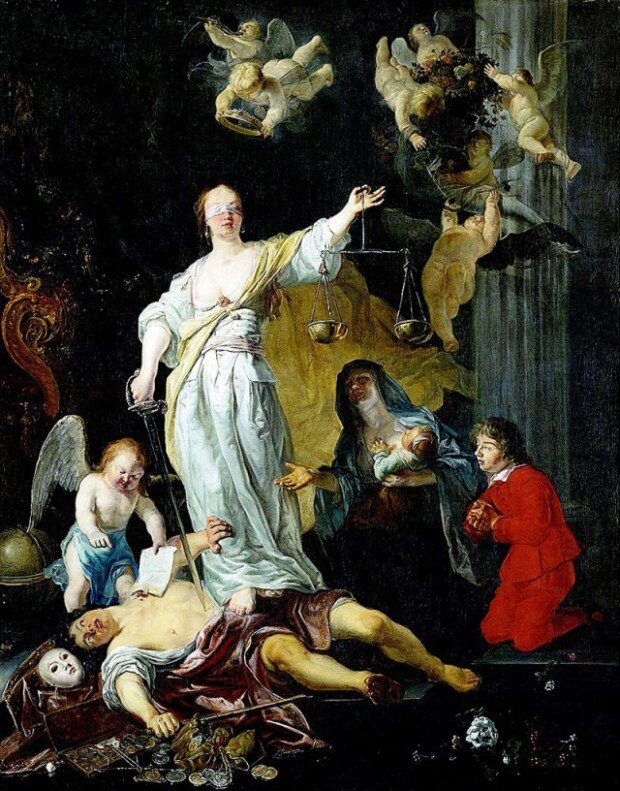This is how justice works
This is how justice works
Posted February. 16, 2023 07:47,
Updated February. 16, 2023 07:47

Justice, what's the right thing to do? The question was asked by not only global bestseller Michael J. Sandel in his book but also ancient scholars. Greek philosopher Plato regarded justice as the main goal of a state. In the 17th century, Dutch genre painter Gabriel Metsu described the concept of justice in a drawing titled “The Triumph of Justice.”
In the middle of the drawing is the goddess of justice, wearing a white dress and accompanied by a group of angels. With her eyes covered with a strip, she grabs a sword in the right hand and a scale in the left hand. A half-naked young man, seemingly in agony, is laid down under her feet. He holds a yardstick with his mask on the floor right next to him. A bunch of coins are out of an open sack. The man tripped over by the goddess symbolizes avarice and deception. An angel standing near his face hands over a document sheet, implying how awfully this conman blinded by greed has deceived many people. On the right side of the drawing are a woman with a baby in her arms and a young boy kneeling down. Her mourning veil tells that she is a widow, and the boy wearing red clothes is an orphan. Both seem to share their stories and make a plea. The goddess of justice punishes the greedy man with the sword while showing the scale of equality to the widow and the boy to ensure they are safely protected.
This drawing represents what the painter’s life was like. In the same year he was born, he lost her father, a laborer. Back then, children with either parent dead were considered an orphan. Bringing her three kids, his mother, a poor midwife, ended up losing her husbands as many as four times. However, fortunately, she could receive assistance from public charity groups because she was a widow. Metsu started his professional career at the age of 19. It was at 22 when he drew the painting. Life must have been hard for the poor young artist, but he could seek his dreams and make them come true because he strongly believed that justice would win just as the title of the drawing says. In some sense, it is Metsu’s answer to the question of what justice is like. Justice is brought to the evils, while good people can feel safe and secure. Justice brings equality to everyone. That is how justice works. The drawing asks us if greater justice is realized in our time than when Plato lived and in the Netherlands of the 17th century.







